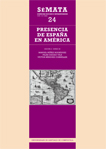Tsunamis, amenaza, vulnerabilidad y riesgo en el borde costero de Chile central.
Contido principal do artigo
Resumo
Las características tectónicas del margen continental chileno y su intensa y constante actividad sísmica, explican un nutrido historial de eventos catastróficos como sismos y tsunamis. La catástrofe más reciente es la acontecida el pasado 27 febrero de 2010, terremoto y posterior tsunami. Sin embargo, a pesar de este extenso historial no existe en Chile una respuesta organizada a través de generación de políticas públicas que aborden una gestión integral de riesgo de desastres, sobre todo por que predomina un enfoque unifactorial que se centra en las amenazas.
Este estudio indaga, a partir del conocimiento de la amenaza de tsunami, los niveles de vulnerabilidad de los habitantes de las zonas potencialmente inundables en las comunidades costeras de la región centro-sur de Chile. En este contexto, se analizan diversos tipos de vulnerabilidades en la localidad costera de Quidico (Provincia de Arauco, Región del Biobío), con el fin de aportar una visión del desastre desde la vulnerabilidad global, es decir, el efecto de la ocurrencia de un fenómeno natural en las personas y su respuesta ante él.
Los resultados nos indican que existen altos niveles de vulnerabilidad socioeconómica, conjugados con altos niveles de vulnerabilidad educativa, organizacional y política. Esto se traduce en una vulnerabilidad global que predomina en el 80% de las zonas analizadas, y que nos permite concluir que la conformación de una costa de rápido acceso a las zonas de altura y un nivel de conocimiento no formal de la Comunidad, sino más bien ancestral, fue determinante en que las pérdidas de vidas humanas fuese tan baja.







